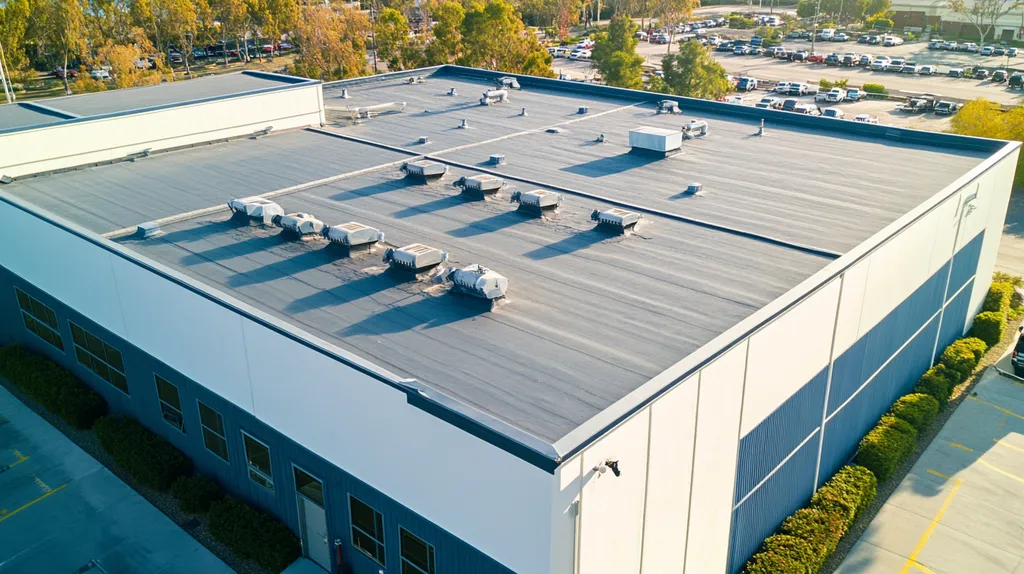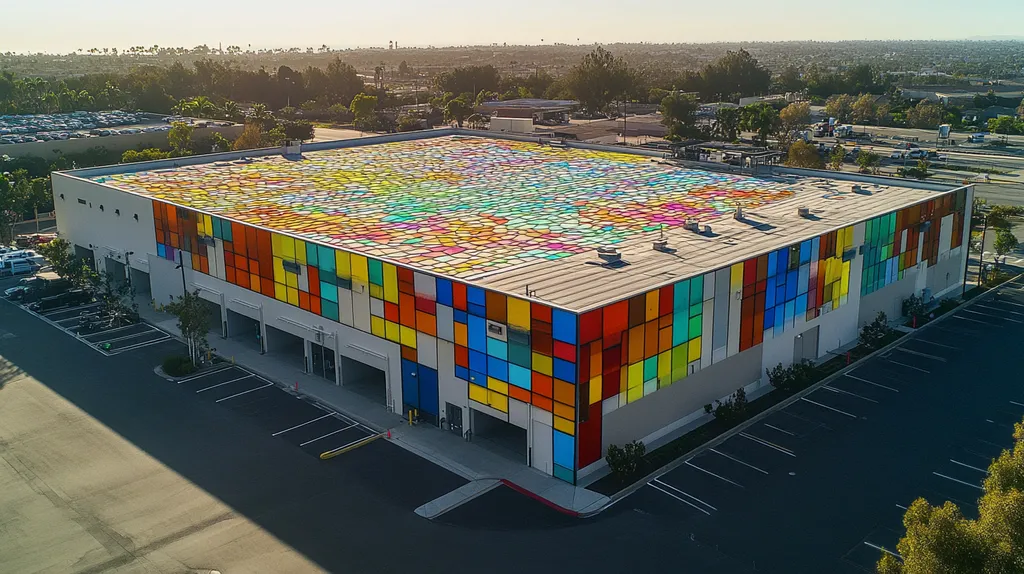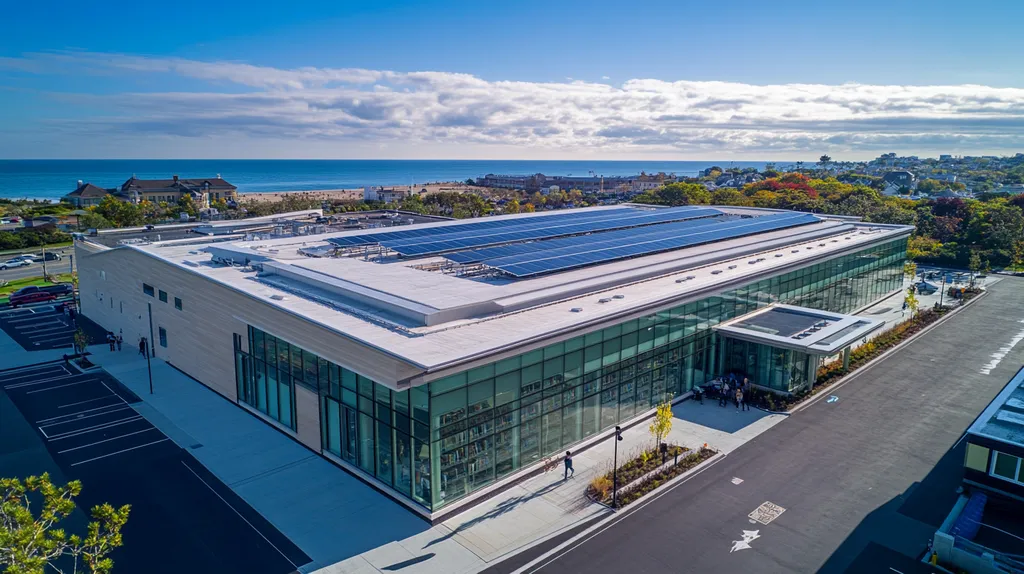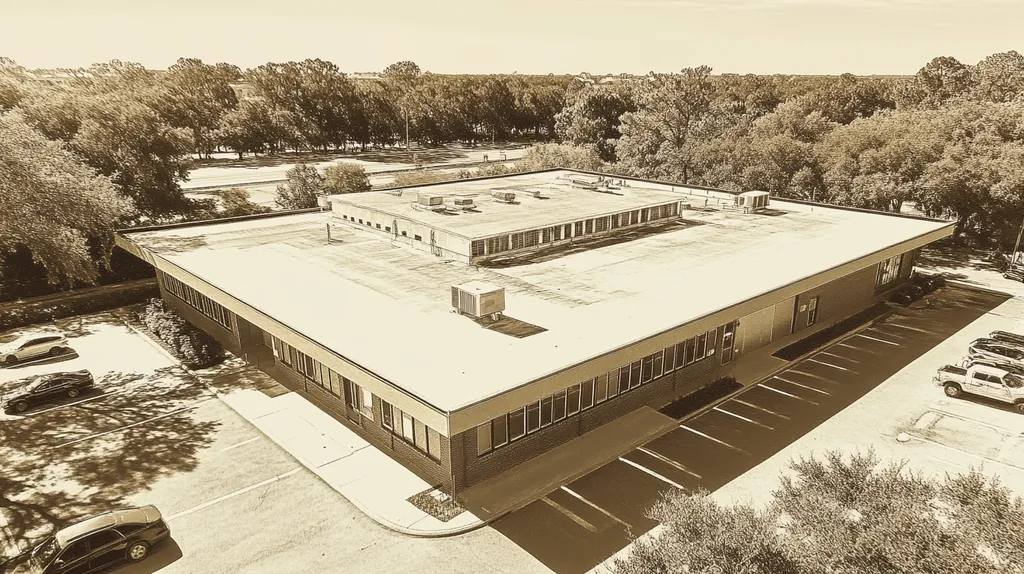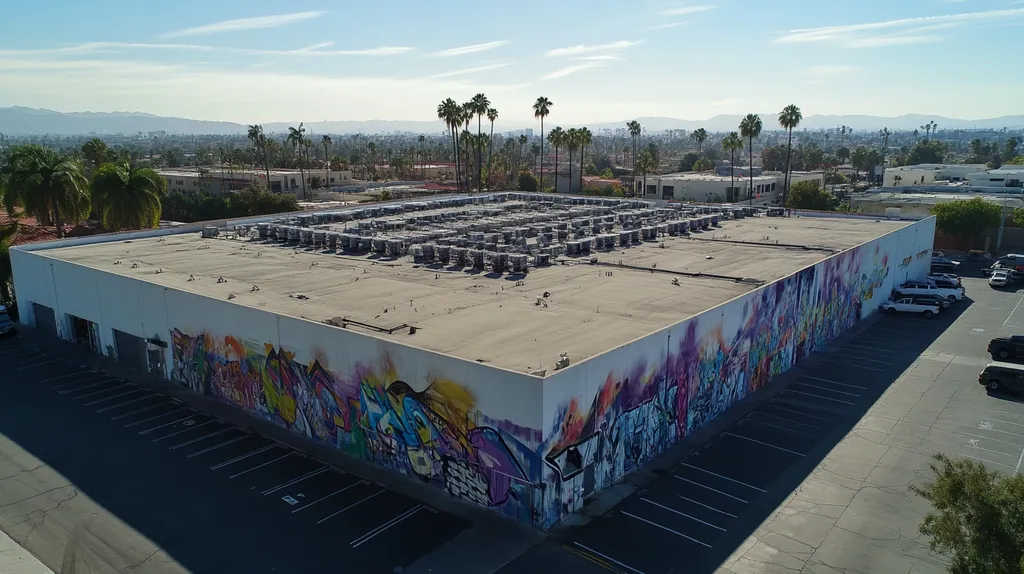Welcome to today’s Battle Royale featuring two roofing heavyweights: “Reclaimed Roofing Material” in the east corner versus “Asphalt Shingles” in the west!
Tonight’s showdown pits these contenders against each other across six punishing rounds designed to test every aspect of their performance for Roof Recycling Practices.
At stake? Millions in potential costs, decades of building protection, and the critical performance demands of modern commercial and industrial facilities.
Our professional judging panel will evaluate each round on technical merit, real-world performance, and value delivery. After all six rounds, we’ll declare our ultimate champion.
Ladies and gentlemen, facility managers and building owners… it’s time to rumble!
ROUND 1: INITIAL COSTS & INSTALLATION
The choice between reclaimed roofing materials and asphalt shingles is not just a budgetary concern; it’s a decision with far-reaching implications for sustainability and long-term operational costs. Modern roofing projects generate significant waste, with traditional materials contributing heavily to landfills.
Using recycled materials in roofing projects can dramatically reduce environmental impact while potentially offering long-term cost benefits. The challenge lies in balancing immediate needs with sustainable practices that benefit both building owners and the environment. (source: EcoMinded Solutions)
Material Expenses
Initial material costs represent a significant portion of any roofing project’s budget. Traditional asphalt shingles typically cost between $90-100 per square, making them an attractive option for cost-conscious property owners.
Reclaimed roofing materials often command higher upfront prices, ranging from $120-150 per square. However, these materials frequently offer superior durability and better resistance to weather conditions.
While the initial investment in reclaimed materials is higher, their extended lifespan and potential energy efficiency benefits can result in lower lifetime costs. For material expenses, considering long-term value, reclaimed materials earn an “ADVANTAGE.”
Installation Complexity
Installation procedures significantly impact project costs and timelines. Asphalt shingles benefit from standardized installation methods and widely available skilled labor, making them relatively straightforward to install.
Reclaimed materials often require specialized knowledge and installation techniques. This expertise can be harder to find and typically commands higher labor rates.
The additional complexity of working with reclaimed materials can extend installation times and increase labor costs. For installation complexity, asphalt shingles claim an “ADVANTAGE.”
Project Timeline
Project duration affects both costs and business operations. Asphalt shingle installations typically complete within 3-5 days for average commercial properties, minimizing business disruption.
Reclaimed material projects often require extended timelines for proper material sourcing, preparation, and installation. This longer duration can impact facility operations and require additional project management.
The efficient installation timeline of asphalt shingles provides a clear benefit for businesses seeking minimal disruption. For project timeline considerations, asphalt shingles earn an “ADVANTAGE.”
ROUND 1 WINNER: Asphalt Shingles
ROUND 2: DURABILITY & LIFESPAN
The United States generates approximately eleven million tons of asphalt shingle waste annually, highlighting the critical importance of material longevity in roofing choices. Understanding the durability differences between reclaimed materials and asphalt shingles can dramatically impact both environmental sustainability and long-term facility costs. (source: EcoMinded Solutions)
When evaluating roofing materials, durability and lifespan directly affect maintenance schedules, replacement frequencies, and total ownership costs. These factors become increasingly important as facilities face rising material costs and growing pressure to reduce environmental impact.
Weather Resistance
Weather resistance determines how well roofing materials withstand environmental stresses over time. Exposure to UV rays, temperature fluctuations, and precipitation can significantly impact roof performance and longevity.
Reclaimed materials, particularly slate and metal, demonstrate superior resistance to weather-related deterioration. These materials have already proven their durability through decades of service, often maintaining their protective properties with minimal degradation.
Asphalt shingles typically show signs of weather damage within 15-20 years, including granule loss, curling, and cracking. This vulnerability leads to more frequent repairs and earlier replacement needs.
For weather resistance, reclaimed materials earn a clear “ADVANTAGE.”
Structural Integrity
Structural integrity involves a material’s ability to maintain its protective qualities under stress. This factor directly influences maintenance requirements and repair frequencies.
Reclaimed roofing materials, especially those salvaged from older buildings, often feature superior construction quality and materials compared to modern alternatives. Their proven track record of performance provides confidence in long-term structural stability.
While modern asphalt shingles offer adequate initial protection, their organic components naturally degrade over time. This degradation accelerates in areas with extreme temperature variations or heavy precipitation.
For structural integrity, reclaimed materials claim an “ADVANTAGE.”
Maintenance Requirements
Regular maintenance impacts both operational costs and overall lifespan. The frequency and complexity of required maintenance directly affect facility management resources.
Reclaimed materials typically require minimal ongoing maintenance beyond periodic inspections. Their robust construction and time-tested durability often translate to simpler maintenance protocols.
Asphalt shingles demand more frequent inspections and repairs, particularly after severe weather events. Their shorter lifespan necessitates more aggressive maintenance schedules to prevent premature failure.
For maintenance requirements, reclaimed materials secure another “ADVANTAGE.”
ROUND 2 WINNER: Reclaimed Roofing Materials
ROUND 3: PERFORMANCE FACTORS
Performance factors in roofing systems directly impact both environmental sustainability and financial outcomes for property owners. Recent industry data shows that poor material choices can lead to premature failures, costing facilities up to three times more in lifetime expenses compared to optimal selections. Understanding these performance dynamics helps facility managers make informed decisions that protect both their buildings and bottom lines.
Material Sustainability
The sustainability of roofing materials significantly impacts both environmental outcomes and long-term cost efficiency. Metal components in reclaimed roofing materials can be fully recycled into new products, from building materials to consumer goods, creating a closed-loop system that reduces waste and environmental impact.
Reclaimed metal roofing materials demonstrate exceptional sustainability credentials, requiring just 5% of the original energy when recycled for aluminum components and 26% for steel elements. Additionally, these materials can be repeatedly recycled without losing their structural integrity. (source: Sheffield Metals)
Traditional asphalt shingles present significant recycling challenges, with most ending up in landfills after their service life. Their petroleum-based composition makes them difficult to process for reuse, contributing to mounting waste management issues.
For material sustainability, reclaimed materials earn a clear “ADVANTAGE.”
Energy Efficiency
Energy efficiency directly affects building operating costs and environmental impact. Reclaimed materials, particularly metal and slate options, often provide superior thermal performance compared to conventional alternatives.
These materials naturally reflect more solar radiation and can be treated with specialized coatings to enhance their thermal properties. This reflection capability helps reduce cooling costs during summer months while maintaining consistent indoor temperatures.
Asphalt shingles typically absorb more heat, potentially increasing cooling demands and energy consumption. Their darker colors and material composition can contribute to higher indoor temperatures and increased HVAC loads.
For energy efficiency considerations, reclaimed materials claim an “ADVANTAGE.”
Weather Performance
Weather performance determines how effectively roofing materials protect facilities through various environmental conditions. Reclaimed materials, especially those sourced from previous installations, have demonstrated their resilience through years of actual weather exposure.
These materials typically maintain their protective properties even under extreme conditions, with many showing minimal degradation after decades of service. Their proven track record provides confidence in long-term performance capabilities.
While asphalt shingles offer adequate initial weather protection, they often show accelerated wear in regions with severe weather patterns. Their organic components can deteriorate more quickly when exposed to repeated freeze-thaw cycles or intense UV radiation.
For weather performance, reclaimed materials secure another “ADVANTAGE.”
ROUND 3 WINNER: Reclaimed Roofing Materials
ROUND 4: MAINTENANCE REQUIREMENTS
Effective roof maintenance directly impacts both environmental sustainability and facility operating costs. Nearly 80% of commercial roofs require premature replacement due to inadequate maintenance practices, leading to unnecessary waste and financial burden. Understanding the maintenance requirements for different roofing materials helps facility managers optimize their resources while promoting sustainable practices.
Regular Inspection Requirements
Regular inspections form the foundation of effective roof maintenance programs. The frequency and complexity of these inspections directly impact facility management resources and long-term performance outcomes.
Reclaimed roofing materials typically require specialized knowledge during inspections. Their unique characteristics and varying conditions demand experienced professionals who understand how these materials age and perform over time.
Asphalt shingles benefit from standardized inspection protocols that most roofing professionals can perform effectively. Their widespread use has established clear guidelines for identifying and addressing common maintenance issues.
For inspection requirements, asphalt shingles earn an “ADVANTAGE.”
Repair Complexity
The complexity of repairs significantly influences maintenance costs and facility downtime. Simple repairs help maintain roof integrity while minimizing operational disruptions.
Reclaimed materials often present unique challenges during repairs. Matching existing materials and maintaining historical integrity can require specialized skills and custom solutions.
Asphalt shingles offer straightforward repair options with readily available materials and standardized procedures. An estimated 11 million tons of asphalt shingles enter landfills annually, but these materials can be recycled into new shingles or road construction materials, providing sustainable repair options. (source: Stevens Roofing Corp)
For repair complexity, asphalt shingles claim an “ADVANTAGE.”
Long-term Maintenance Costs
Long-term maintenance expenses significantly impact the total cost of ownership. Understanding these costs helps facility managers make informed decisions about roofing investments.
Reclaimed materials generally require higher-skilled maintenance professionals, increasing service costs. However, their durability often means fewer repairs over time, potentially offsetting the higher service rates.
Asphalt shingles typically incur more frequent but less expensive maintenance costs. Their standardized maintenance procedures and widely available repair materials help keep individual service costs manageable.
For long-term maintenance costs, the options result in a “TIE.”
ROUND 4 WINNER: Asphalt Shingles
ROUND 5: SUSTAINABILITY CREDENTIALS
The roofing industry faces a critical turning point in environmental stewardship, with material choices directly impacting waste management and resource conservation. Current roofing practices generate millions of tons of waste annually, much of which could be diverted from landfills through better material selection and recycling practices.
The sustainability implications of roofing choices extend far beyond individual buildings, affecting community resources, energy consumption, and long-term environmental health. Understanding these impacts helps facility managers make decisions that benefit both their operations and the planet.
Material Lifecycle Impact
The environmental impact of roofing materials begins with production and extends through disposal. Metal components in reclaimed roofing materials demonstrate exceptional sustainability, requiring just 5% of the original energy for recycled aluminum and 26% for steel elements. (source: Sheffield Metals)
Reclaimed materials often come from buildings scheduled for demolition, preventing valuable resources from entering landfills. These materials can be cleaned, refurbished, and reinstalled with minimal processing, significantly reducing their carbon footprint.
Asphalt shingles, conversely, require substantial energy for production and typically end their lifecycle in landfills. Their petroleum-based composition makes recycling difficult and energy-intensive.
For material lifecycle impact, reclaimed materials earn an “ADVANTAGE.”
Resource Conservation
Resource conservation through roofing choices directly affects environmental sustainability. Reclaimed materials prevent the extraction and processing of new raw materials, preserving natural resources and reducing industrial energy consumption.
These materials often retain their original properties through multiple use cycles, making them ideal for long-term resource conservation. Their durability allows for extended service life, further reducing demand for new materials.
Traditional asphalt shingles contribute to ongoing resource depletion through continuous production cycles. Their relatively short lifespan necessitates frequent replacement, driving continued raw material consumption.
For resource conservation, reclaimed materials claim an “ADVANTAGE.”
Waste Reduction
Waste reduction capabilities significantly impact a material’s environmental footprint. Reclaimed roofing materials create a circular economy model, where materials move from one application to another instead of ending in landfills.
The reuse of these materials prevents the creation of new waste while preserving embodied energy. This approach aligns with modern sustainability goals and waste reduction initiatives.
Asphalt shingles present significant end-of-life challenges, with limited recycling options and substantial waste generation. Their disposal often contributes to landfill congestion and environmental degradation.
For waste reduction, reclaimed materials secure another “ADVANTAGE.”
ROUND 5 WINNER: Reclaimed Roofing Materials
ROUND 6: SPECIALIZED APPLICATIONS
Specialized roofing applications in industrial and commercial settings demand materials that can withstand extreme conditions while meeting strict performance requirements. The stakes are particularly high in facilities like data centers, manufacturing plants, and healthcare institutions, where roof failure can lead to catastrophic operational disruptions.
Material selection for these specialized applications significantly impacts safety, operational continuity, and long-term facility costs. The wrong choice can result in premature failure, compromised operations, and substantial replacement expenses.
Chemical and Environmental Resistance
In industrial settings, roofing materials must withstand exposure to harsh chemicals, pollutants, and extreme temperature variations. The ability to maintain structural integrity under these conditions directly affects facility safety and operational reliability.
Reclaimed metal roofing materials demonstrate exceptional resistance to chemical exposure and environmental stressors. The high recycled content and recyclability of metals like steel, aluminum, copper, and zinc make them ideal for sustainable industrial applications. (source: Metal Construction Association)
Asphalt shingles often deteriorate rapidly when exposed to industrial chemicals and pollutants. Their organic components can break down under harsh conditions, leading to premature failure and increased maintenance needs.
For chemical and environmental resistance, reclaimed materials earn an “ADVANTAGE.”
Load-Bearing Requirements
Specialized applications frequently demand roofing systems capable of supporting substantial additional loads from equipment, solar installations, or frequent maintenance traffic. The structural capacity of roofing materials directly impacts facility design and operational flexibility.
Reclaimed materials, particularly metal systems, offer superior strength-to-weight ratios. Their durability allows for additional loading without compromising structural integrity or requiring extensive reinforcement.
Traditional asphalt shingles provide limited load-bearing capacity and can become unstable under heavy equipment loads. Their installation often requires additional structural support, increasing overall project costs.
For load-bearing requirements, reclaimed materials claim an “ADVANTAGE.”
Installation Flexibility
Complex roof geometries and specialized equipment penetrations require materials that can adapt to unique installation requirements. The ability to accommodate custom configurations while maintaining weathertight integrity is crucial for specialized applications.
Reclaimed materials, especially metal systems, offer superior flexibility in addressing complex installation requirements. Their robust nature allows for custom fabrication and precise fitting around equipment penetrations.
Asphalt shingles present significant challenges when dealing with complex geometries or numerous penetrations. Their standardized formats limit adaptation to specialized configurations, often resulting in compromise solutions.
For installation flexibility, reclaimed materials secure another “ADVANTAGE.”
ROUND 6 WINNER: Reclaimed Roofing Materials
AND THE WINNER IS…
After six grueling rounds of technical evaluation, we have our verdict…
In a decisive 4-2 victory, RECLAIMED ROOFING MATERIALS claims the championship belt! This sustainability superstar dominated with knockout performances in durability, performance factors, sustainability credentials, and specialized applications.
The champion’s superior weather resistance, minimal maintenance requirements, and exceptional environmental credentials proved too powerful for the competition. With up to 95% energy savings in recycling and virtually unlimited reuse potential, reclaimed materials delivered a technical knockout in sustainability.
But don’t count asphalt shingles out completely! This reliable contender still packs a punch when rapid installation and standardized maintenance protocols are top priorities. For projects with tight timelines or limited access to specialized contractors, asphalt shingles remain a viable challenger.
Remember, folks: Every building brings its own unique conditions into the ring. Local climate, structural requirements, and specific facility needs can all influence the final scorecard. Property owners should always consult with qualified roofing professionals who can evaluate their particular situation before making the final call.
In the high-stakes arena of commercial roofing, victory goes to those who match their facility’s specific requirements with the right material’s strengths. Choose your champion wisely – the protection of your property depends on it!
FREQUENTLY ASKED QUESTIONS
Q. What are the initial costs for a commercial roof installation?
A. Initial costs vary significantly between reclaimed materials and asphalt shingles. While asphalt shingles are more affordable upfront, reclaimed materials typically offer longer lifespan benefits, potentially resulting in lower long-term costs. Analyzing both options can guide informed decisions that balance short-term investment with long-term advantages.
Q. How does the durability of reclaimed roofing materials compare to asphalt shingles?
A. Reclaimed materials generally demonstrate superior durability and longevity compared to asphalt shingles. They withstand weather conditions better and require less frequent replacement. This resilience can lead to reduced overall maintenance needs and extended value, making them a robust choice for property owners.
Q. What performance factors should I consider in an industrial roof?
A. Key performance factors include energy efficiency, weather performance, and durability. Understanding how roofing materials perform under varying conditions can significantly influence operational costs and environmental sustainability. Effective decision-making in this area is crucial for maintaining a high-performing facility.
Q. How often should I inspect maintenance requirements for my commercial roof?
A. Regular inspections are vital and should typically occur twice a year or after severe weather. For asphalt shingles, standardized protocols exist, making inspections straightforward, while reclaimed materials may require specialized knowledge due to their unique characteristics. Consistent inspections help identify potential issues early.
Q. What are the sustainability benefits of using reclaimed roofing materials?
A. Reclaimed materials support sustainability by reducing landfill waste and conserving resources. Their production and recycling require significantly less energy compared to traditional materials, contributing to overall environmental health. Choosing reclaimed options positions facilities as leaders in sustainable practices within their communities.
Q. How do industrial roof requirements differ from regular commercial roof needs?
A. Industrial roofs often require materials that can handle heavier loads, chemical exposures, and extreme conditions. Unlike regular commercial roofs, which may prioritize cost and aesthetics, industrial roofing materials must focus on performance and durability to ensure long-term facility functionality.
Q. What can I do to improve the sustainability of my roofing choice?
A. To promote sustainability, consider using reclaimed roofing materials that minimize waste and resource consumption. Additionally, explore energy-efficient roofing systems that lower energy costs. Engaging knowledgeable contractors who advocate sustainable practices can further enhance your contribution to environmental stewardship.

